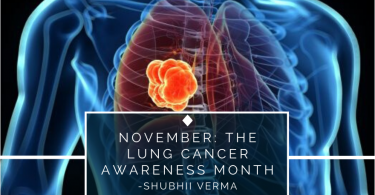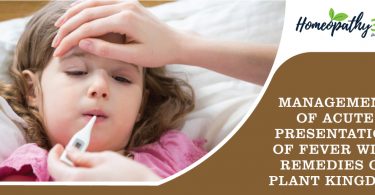
Abstract:
Body dysmorphic disorder is a causes serious distress and sometimes even leads to suicidal ideations in individuals suffering. In most of the cases, if are not treated promptly, the severity of the condition grows worse with the age due to the apparent changes in their body as a result of ageing. This articles focuses to shed light on how Homoeopathic remedies can be helpful in treating Body Dysmorphic Disorder.
Key words:
Body Dysmorphic Disorder, BDD, Homoeopathy, Materia Medica
Introduction
Body Dysmorphic disorder (BDD) is a disorder of psychological origin which is characterized by an obsessive idea that their body or any particular body part is flawed or has a defect and therefore warrants exceptional measures to hide or fix it
This idea is usually a misconception or exaggerated in nature. And the person suffering takes extreme measures to rectify the flaw and are generally obsessed with this thought
It is characterized by preoccupation with one or more perceived defects or flaws in physical appearance that are not observable or appear only slightly to others, and by repetitive behaviors (eg., comparing one’s appearance with that of other people) in response to the appearance concern.
The preoccupation in affected individuals cause clinically significant distress in social, occupational and other areas
It affects people of any gender. It tends to begin during the teen years or early adulthood. That is the age when children start comparing themselves to others. Individuals may tend to develop these feelings following rejection, failure and poor self confidence
Body dysmorphic disorder is a chronic condition without treatment, It can get worse as people get older. They become even more unhappy with physical changes that come with aging such as, wrinkles and Grey hairs
People with body dysmorphic disorder may have other disorders. Some having eating disorders, anxiety disorders, depression and obsessive compulsive disorder (OCD).
Characteristics of BDD include:
- Obsessive thoughts of Flawed physical appearance
- Constant comparison of oneself with others (appearance in general/ body part)
- Repetitive behaviors such as:
- Repeatedly checking in mirror or direct observing of the perceived flaw
- Excessive grooming
- Trying to hide the flawed part through makeup or clothing
- Skin picking/ touching constantly
- Constantly seeking reassurance
- Some even under go surgical procedures
Many individuals suffering from BDD have delusions such as- they imagine that all people around them are making note of them or are mocking them. Hence they are extremely sensitive towards facial expressions or in certain situations
Moreover suicidal ideation and attempts are also more in individuals suffering from BDD
The most common area of concern for people with BDD include:
- Skin imperfections- including wrinkles, scars, acne and blemishes
- Hair, including head/ body hair/ baldness
- Facial features, most often nose
- Stomach/ chest
Homoeopathic Management:
Homoeopathy is a holistic system of medicine where, a person as a whole is treated and not diseased parts hence it can be very helpful in treating individuals suffering from Body Dysmorphic Disorder.
Beauty of Homoeopathic treatment lies in symptom similarity. That is, the medicines are prescribed based on the similarity between the symptoms produced by the remedy in healthy individuals and that of the affected individual.
In this article, an attempt to compare and contrast the symptoms of few indicated homoeopathic remedies will be done which are as follows:
Sabadilla:
Imagines the body is withering, that the limbs are crookedd, that the chin is elongated and larger on one side than the other. She feels that is so and believes it even in spite of her vision. It is a sensation which she believes, a delusion, an insanity
Erroneous impressions as to the state of his body
Imagines parts shrunken
Body seems to be collapsed, like that of a corpse
The imaginations are groundless; nothing is visible and the suffering is greater than if there was something to be seen
Scrotum thinks his is swollen
Thuja occidentalis:
Erroneous impression as to the state of the body; thinks she is made of glass especially limbs; the idea is not that of transperancy, but rather of brittleness fears that she would break into pieces
Sensation as if whole body is very thin and delicate and could not resist least attack
Aconitum napellus:
Feels that parts of his body are abnormally thick
Imagines some parts of the body is deformed
Head seems enlarged
Stramonium:
Delusions- Thinks himself tall,
Thinks body parts are double, or a part is missing
Body parts are enlarged
Platinum metallicum:
She imagines that her body is large and that the bodies of other people are smaller in comparison with her own
Imagines that they are very tall
Summary:
Since homoeopathy is a natural, holistic method of treatment, it aims at treating the person as a whole and hence the system is enriched with various medicines which can help in effective management of Body dysmorphic disorder as evident from this article.
Reference
- https://en.wikipedia.org/wiki/Body_dysmorphic_disorder
- Diagnostic and Statistical Manual of Mental Disorders. 5th ed. Washington: American Psychiatric Publishing; 2013.
- Sadock B, Sadock V, Ruiz P. Kaplan & Sadock’s synopsis of psychiatry. 11th ed. New Delhi: Wolters Kluwer (India) Pvt Ltd; 2015.
- Kent J. Lectures on Homoeopathic Materia medica. New Delhi: B Jain Publishers; 2002.
- William Boericke. Pocket mannual of Homoeopathic materia medica and repertory, 14th impression ed. New delhi: B jain publishers; 2016.
- John Henry Clarke. A dictionary of practical materia medica, 34th impression ed. New delhi: B jain publishers; 2017.
About Author:
Dr Archana Shetty
Assistant Professor
Department of Pathology and Microbiology
Yenepoya Homoeopathic Medical College and Hospital
Manglore, Karnataka, India





